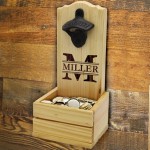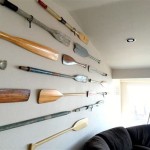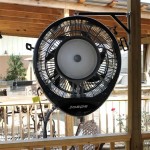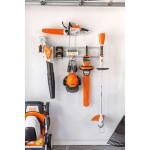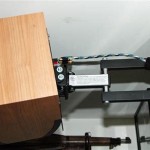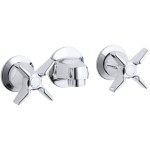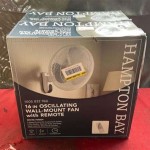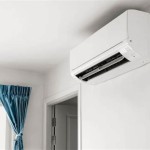Commercial Wall Mount Flag Pole: A Comprehensive Guide
The commercial wall mount flag pole offers a practical and aesthetically pleasing solution for displaying flags in various business and public settings. Unlike in-ground or outrigger flag poles, wall mounted versions are affixed directly to a building's facade, maximizing space efficiency and simplifying installation in urban environments or locations with limited ground access. This article provides a detailed overview of commercial wall mount flag poles, covering their advantages, types, selection criteria, installation guidelines, and maintenance practices.
Advantages of Wall Mount Flag Poles
Wall mount flag poles present several distinct advantages over other types of flag display systems. Foremost is their space-saving design. By attaching directly to a building's exterior, they eliminate the need for dedicated ground space, making them ideal for locations with limited area, such as downtown businesses, schools, and government buildings. This is particularly important in densely populated urban areas where available ground space is at a premium. Furthermore, their elevated positioning on a building wall ensures greater visibility, allowing flags to be seen from a distance. This increased visibility is crucial for businesses seeking to enhance their brand presence and attract attention. Another advantage lies in the relative ease of installation, especially compared to in-ground flag poles, which often require extensive excavation and concrete pouring. Wall mount flag poles typically involve securing a mounting bracket to the building's wall using appropriate anchors and hardware. Finally, wall mount flag poles often require less maintenance than in-ground poles due to their elevated positioning, which reduces exposure to ground-level debris and potential vandalism.
Beyond practicality, wall-mounted flagpoles can also contribute to the aesthetic appeal of a building. They can enhance the architectural character of a structure and provide a focal point, particularly when adorned with a professionally designed flag. The flagpole and flag become an integral part of the building's overall visual identity, reflecting the values, brand, or affiliation it represents.
Types of Commercial Wall Mount Flag Poles
Commercial wall mount flag poles are available in various types, each catering to specific needs and aesthetic preferences. The primary differentiators include material, size, angle, and mounting mechanism. Understanding these distinctions is crucial for selecting the most appropriate pole for a given application.
Material: The most common materials for commercial wall mount flag poles are aluminum and stainless steel. Aluminum offers a balance of strength, lightweight properties, and corrosion resistance. It is often anodized or powder-coated for added durability and aesthetic appeal. Stainless steel, on the other hand, provides superior strength and corrosion resistance, making it ideal for coastal environments or locations with harsh weather conditions. While typically more expensive than aluminum, stainless steel offers a longer lifespan and requires less maintenance. Fiberglass is another less common option, known for its non-conductive properties and resistance to extreme weather. However, fiberglass flag poles are generally less robust than aluminum or stainless steel and may not be suitable for high-wind areas.
Size: The appropriate size of a wall mount flag pole depends on several factors, including the size of the building, the desired visibility, and the size of the flag being displayed. Wall mount flag poles typically range in length from 6 feet to 20 feet. The general guideline is to select a pole that is proportional to the height of the building. A flag that is too small will appear insignificant, while a flag that is too large may overwhelm the building's facade. It is also important to consider local regulations regarding flag pole height, which may limit the maximum permissible size.
Angle: Wall mount flag poles are available in various angles, typically ranging from 30 degrees to 90 degrees. The angle determines the outward extension of the flag from the building. A steeper angle, such as 90 degrees (perpendicular to the wall), allows the flag to fly directly outward, maximizing its visibility. A shallower angle, such as 30 degrees, keeps the flag closer to the building, which may be preferable in situations where space is limited or where a more subtle presentation is desired. The choice of angle also depends on aesthetic considerations and the overall architectural style of the building.
Mounting Mechanism: The mounting mechanism is a critical component of a wall mount flag pole, as it ensures the pole's stability and secure attachment to the building. Common mounting mechanisms include:
- Bracket Mounts: These involve attaching a bracket directly to the building's wall using bolts or screws. The flag pole then slides into the bracket and is secured with set screws or other fasteners. Bracket mounts are suitable for a range of building materials, including brick, concrete, and wood.
- Flange Mounts: These feature a flange plate that is bolted to the wall. The flag pole is then welded or bolted to the flange plate. Flange mounts offer greater strength and stability compared to bracket mounts, making them suitable for larger flag poles or high-wind areas.
- Adjustable Mounts: These allow for adjusting the angle of the flag pole after installation. This can be useful in situations where the desired angle is not known in advance or where adjustments are needed to accommodate changing wind conditions.
Selecting the Right Wall Mount Flag Pole
Choosing the optimal commercial wall mount flag pole involves careful consideration of several factors, including the building's architecture, local regulations, environmental conditions, and budget. A thorough assessment of these factors will ensure that the selected pole meets the specific needs of the location and provides years of reliable service.
Building Architecture: The flag pole should complement the architectural style of the building. The color, material, and design of the pole should harmonize with the building's facade. For example, a sleek, modern building may benefit from a stainless steel flag pole with a minimalist design, while a traditional brick building may be better suited to an aluminum flag pole with a more ornate bracket. Consider the existing colors and textures of the building's exterior and select a flag pole that enhances the overall aesthetic appeal.
Local Regulations: Before installing a wall mount flag pole, it is essential to check local regulations and ordinances. Many municipalities have restrictions on flag pole height, placement, and flag size. Some regulations may also require permits for flag pole installation. Failure to comply with local regulations can result in fines or the requirement to remove the flag pole. Contacting the local building department or homeowners association can provide valuable information about applicable regulations.
Environmental Conditions: The environmental conditions of the location should also be considered when selecting a wall mount flag pole. Areas with high winds require more robust poles and mounting mechanisms to withstand the forces exerted by the wind. Coastal environments require corrosion-resistant materials, such as stainless steel, to prevent rust and degradation. Locations with heavy snowfall may require poles that can withstand the weight of accumulated snow. Selecting a flag pole designed to withstand the specific environmental conditions of the location will ensure its longevity and prevent potential damage.
Budget: The budget is always a factor in any purchasing decision. Wall mount flag poles range in price depending on the material, size, and features. Aluminum flag poles are generally less expensive than stainless steel flag poles. Larger poles and poles with adjustable mounts also tend to be more expensive. Consider the long-term cost of ownership when evaluating different options. While a cheaper pole may seem appealing initially, it may require more frequent maintenance or replacement, ultimately costing more in the long run. Investing in a high-quality flag pole made from durable materials will provide years of reliable service and reduce the need for costly repairs or replacements.
Installation and Maintenance
Proper installation is crucial for the safety and longevity of a commercial wall mount flag pole. Incorrect installation can lead to structural failure, posing a risk to people and property. Regular maintenance is also essential to ensure that the flag pole remains in good condition and continues to function properly.
Installation Guidelines:
- Professional Installation: It is recommended to hire a qualified contractor or engineer to install a commercial wall mount flag pole. Professionals have the expertise and equipment to ensure that the pole is installed correctly and safely.
- Mounting Surface: The mounting surface should be structurally sound and capable of supporting the weight of the flag pole and the forces exerted by the wind. Inspect the wall for any signs of damage or deterioration before installing the pole.
- Anchoring: Use appropriate anchors and hardware to secure the mounting bracket or flange to the wall. The type of anchors required will depend on the building material. Consult with a hardware supplier or engineer to determine the correct type of anchors for the specific application.
- Alignment: Ensure that the flag pole is properly aligned and plumb. Misalignment can put undue stress on the pole and mounting mechanism, potentially leading to failure.
- Torque: Tighten all bolts and screws to the manufacturer's specifications. Overtightening can damage the hardware, while undertightening can cause the pole to loosen over time.
Maintenance Practices:
- Regular Inspections: Inspect the flag pole and mounting mechanism regularly for any signs of damage, corrosion, or loose hardware. Pay particular attention to welds, bolts, and anchors.
- Cleaning: Clean the flag pole regularly to remove dirt, debris, and bird droppings. Use a mild detergent and water solution. Avoid using abrasive cleaners, which can damage the finish.
- Lubrication: Lubricate moving parts, such as swivel rings and clips, periodically to ensure smooth operation. Use a silicone-based lubricant.
- Flag Replacement: Replace the flag as needed to maintain its appearance. Faded, torn, or damaged flags detract from the overall presentation.
- Professional Maintenance: Consider hiring a professional flag pole maintenance company to perform annual inspections and maintenance. Professionals can identify potential problems early and prevent costly repairs.

Orion 6 Premium Wall Mounted Flagpole Old Glory

8 With 3 X5 Us Flag

Deluxe Residential One Piece Black Aluminum Wall Flagpole

Deluxe Residential House Mount

Spinning Flagpole Usa Kit 8ft Heavy Duty

Patio Vertical Wall Mount Flagpole Kit

Wall Mounted Flagpoles Flagpole Kits Liberty

Flagpole Farm Titan Outrigger Wall Mounted Kit Testing

Wv20x Estate Vertical Wall Mount Flagpole

Bonison Black Wall Mount Flag Pole With Bracket For Home Porch

